Marketing Your SaaS Business: Choosing the Right Approach
by Ana Gotter • June 3, 2019
When about 80% of SaaS brands and advertisers create PPC campaigns, they’re focusing exclusively on the ads themselves. They’re laser-focused on who those ads are targeting, what the ads say, which visual components (if any) to use, and what the offer should be. There are so many moving pieces in this alone that it isn’t much of a surprise that sometimes the strategy can stop at the ad and people end up forgetting about what comes next.
But here’s the thing: what comes next is equally as important as the ad, if not more so. Even a great ad won’t get conversions if your landing page doesn’t work.
When it comes to your landing page, there’s one thing that SaaS brands sometimes forget about completely: there’s a difference between pushing for direct sign-ups to the software instead of prioritizing lead generation.
So think quick. Which one do you use? Lead nurturing or direct signups?
There is no one immediate right answer for all SaaS businesses (of course not—that would be too easy!). There are, however, strategic decisions that you can make based on your audience, your ad campaigns, your business, and your offers to decide what would work best for you. When it comes to lead nurturing vs. direct sign-ups, we’ll help you decide what’s right for your campaigns and how to optimize both approaches to their full potential.
Lead Nurturing vs Direct Sign-ups: What’s the Difference?
One thing I’ve noticed with several B2B and SaaS clients is that they don’t always approach lead nurturing and direct sign-ups as two separate tactics—but they should be, even if there’s some overlap. They place a sign-up for a free trial on the page, consider that lead nurturing and sign-ups all in one because they get the email and the user starts using the software.
We’re going to look at lead nurturing as something completely separate from direct sign-ups.
Lead nurturing, for example, will often include a lead form that either allows users to request more information, schedule a demo, sign up for a free call, or receive a free lead magnet. This is a good way to get users into the funnel gently and then nurture them through later on.
You can see that clicking on an ad for the company Falcon takes users to this landing page that’s going hard for lead generation. Viewers are encouraged to request a demo, but there’s also a prominent chat option available in case users want to get in touch there instead. There are plenty of options for users to share their information with a team member, giving the company the chance to follow up and nurture the potential lead.
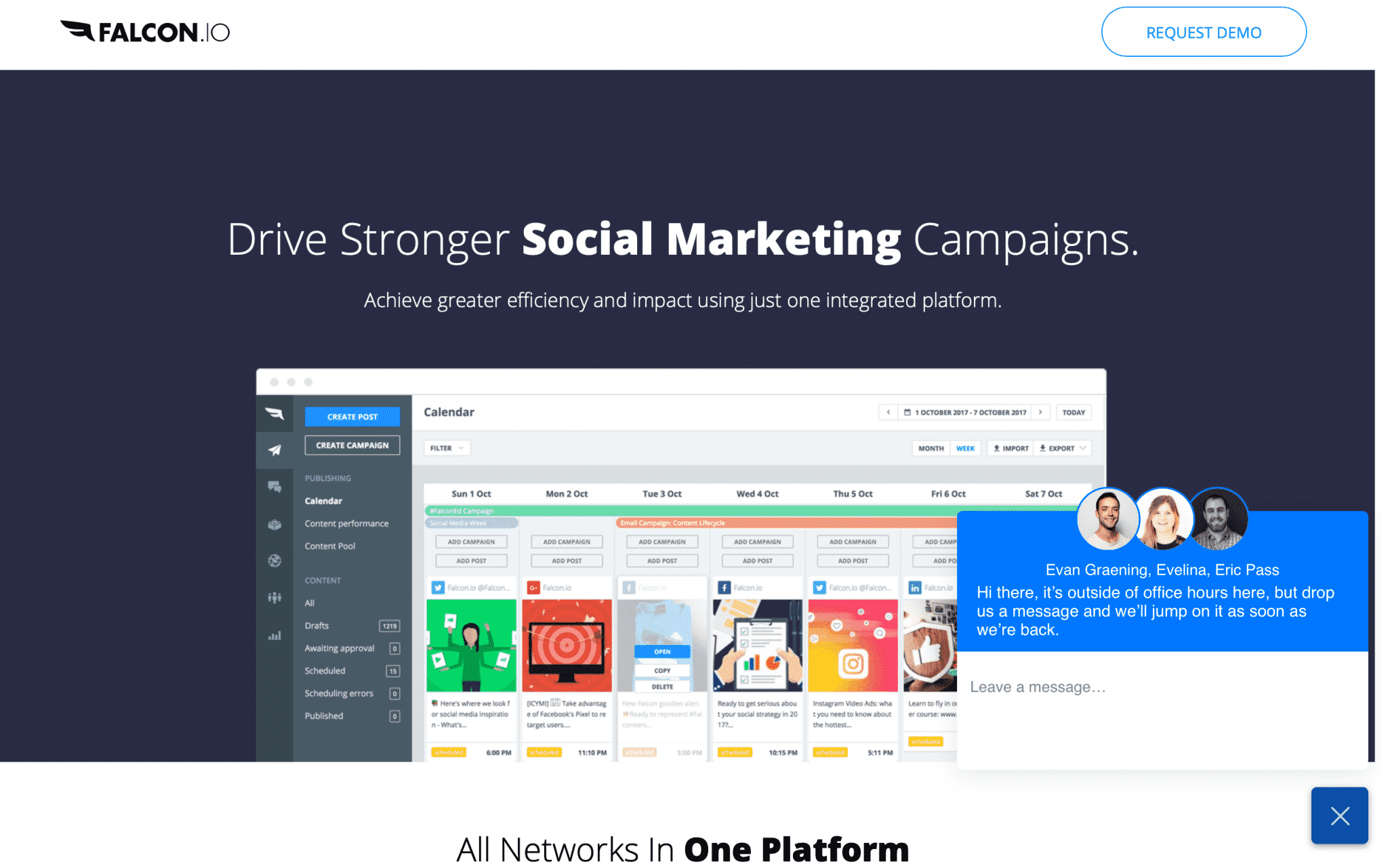
Direct sign-ups are skipping that process, taking users from an ad to a page for a free trial where users can create an account and get started right away. There’s no lead nurturing needed to get them to this point; they dive right in. When you click on a Hootsuite Ad, you’re taken directly to this page, encouraging users to join:

When to Choose Lead Nurturing
There are several clear instances when opting for lead nurturing is typically the right choice. These often (but not always) include:
- Early funnel campaigns when users know nothing about you. This is particularly true for social PPC campaigns where you’re showing up in their feeds even if they didn’t know software like yours existed yet. It also applies to early-funnel keywords like “what is accounting software.” Warming up users and conveying value before asking them to convert is more likely to be successful.
- When you have high-cost software. Does it cost subscribers more than $20 per month to access your services? That can add up quickly, especially for small and medium businesses whose budgets may already be stretched thin. The higher the cost your software is, the more important lead nurturing will be. It only makes sense that it’ll take a business longer to convert on $150 per month keyword research software than $10 per month design software, even if they actually need the former more.
- When you want to cast a wider net. Not all leads who fill out your form will ultimately become customers, but in my experience, you’re going to have much higher lead forms filled out than you will have people sign-up directly for the software. This is particularly true when you’ve got a great lead magnet like an ebook or an interactive calculator that your audience will love.
Lead nurturing allows you to build a relationship with your audience slowly, giving you a chance to better appeal to whatever pain points they have.
How to Optimize Your Lead Nurturing Campaigns
There are several things you can do to maximize success with a lead nurturing campaign. These include:
- Telling people in the copy what to expect. Falcon, for example, uses their headline to tell customers to “request a Falcon.io demo today.” Users know more information would be coming their way, while getting a basic explanation of what the tool offers in the text.
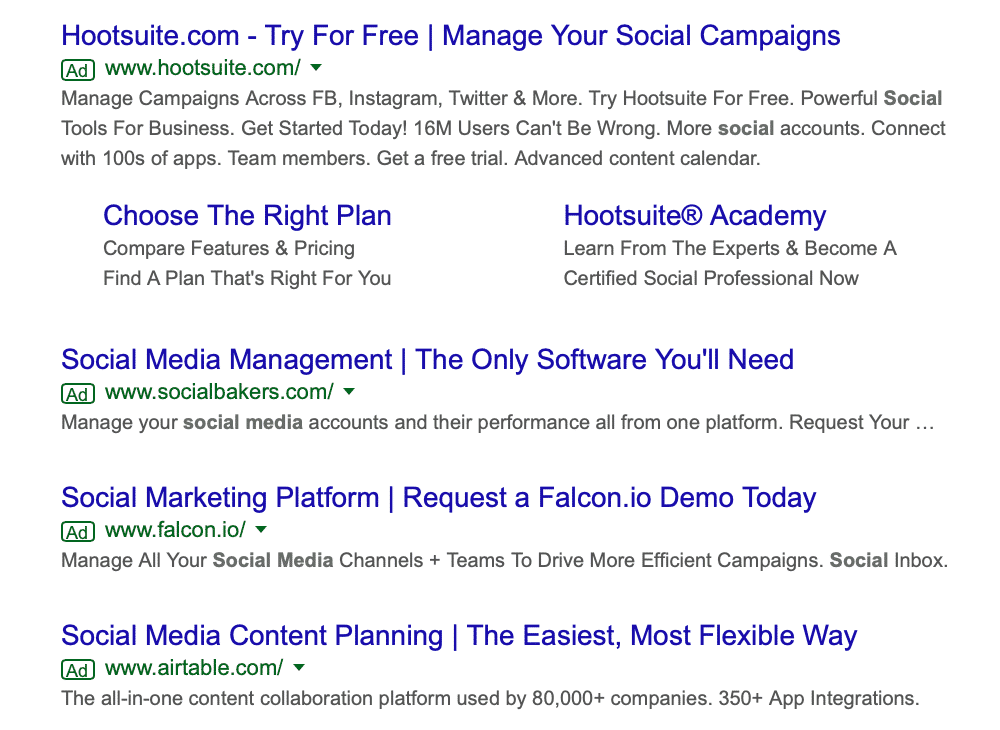
- Have an autoresponder ready to go. Have that email welcome campaign all set, welcoming users to the brand and inviting them to reach out if they have questions. Provide information about the brand, but only in a few sentences and no more so that they aren’t overwhelmed.
- Offer a great lead magnet. Lead magnets can be ebooks, webinars, free demos or consultation calls, or even access to something like a LTV or ROAS calculator. You’re going to be more likely to get these early-funnel audiences to fill out your form if they have a good incentive to do so.
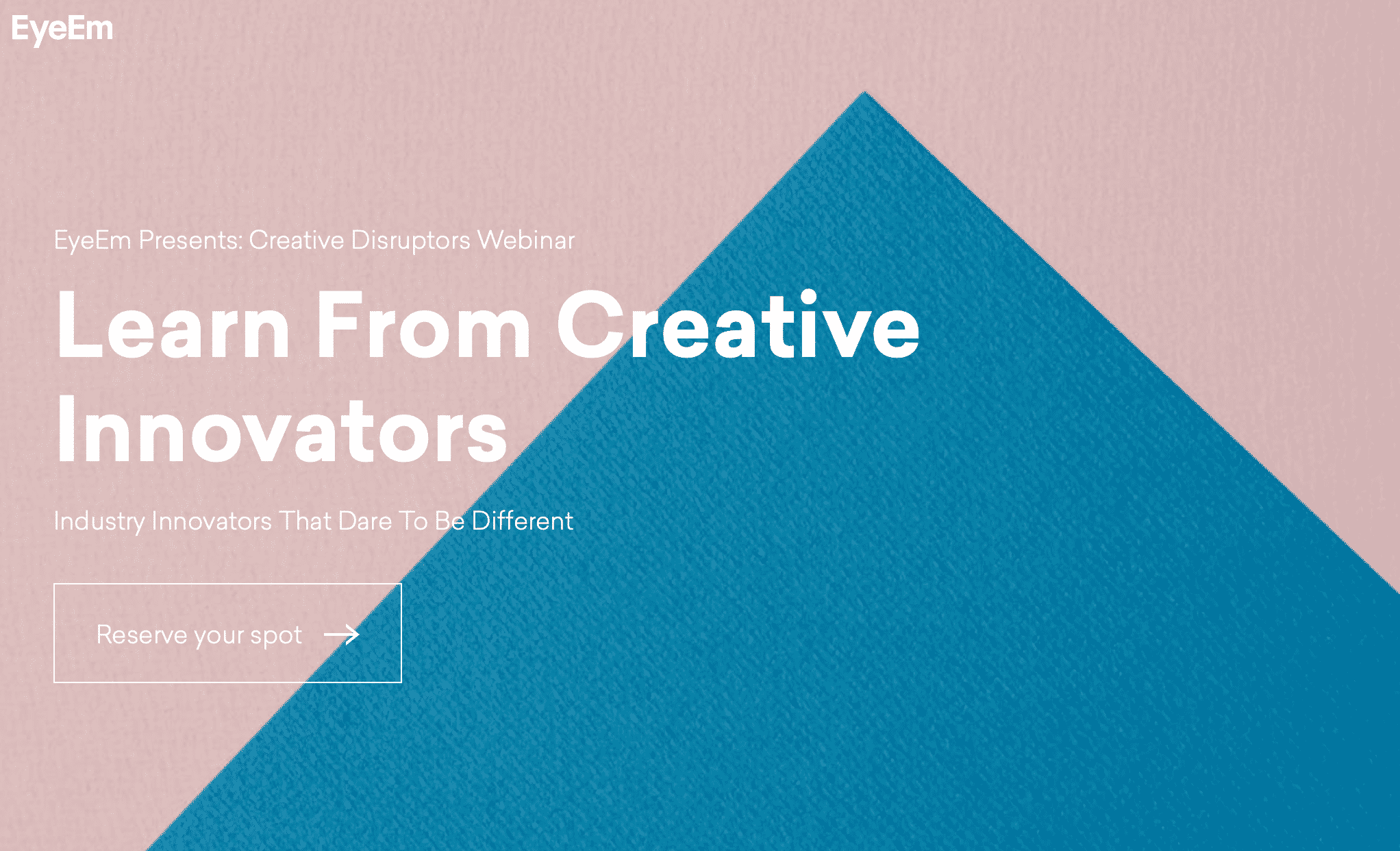
- Use the campaign for momentum. Create retargeting campaigns designed to follow up with these leads, showing them direct sign-up and discount offers to get them to take the next step.
When to Choose Direct Sign-Ups
If you’re not opting for lead nurturing in the “lead nurturing vs. direct sign-ups” decision, your landing pages have to be focused on sign-ups. This will typically happen by encouraging users to start a free trial, giving them that low-risk, high-reward payoff that people are more likely to convert on.
You may want to consider focusing on direct sign-ups when:
- High-intent keywords are being used on search ads. Someone looking for “affordable lead software” knows exactly what they want, and they’re probably close to ready to start trying out options that work for them. Keywords that are further along in the funnel indicate that users may be ready now.
- Retargeting campaigns are in place. Have users watched a video on Facebook Ads, clicked to your site, and are now being shown an offer to get them back there? Go ahead and show them a sign-up offer—they’re familiar with your brand, and if they click, they know what to expect.
- When you have an established brand. Big name brands don’t necessarily need to go quite as hard on the lead nurturing, because a lot of their audience members at least know who they are and that they’re reputable. Direct sign-ups may be even more effective here.
- When your software’s value is clear and the cost is low. Software that’s easy to see the value of will have an easier time getting direct sign-ups. Lead tracking software, for example, is worth every penny; they’ll help you see who is clicking on your ads and site even if you couldn’t find out otherwise, letting you reach out in other ways and earning you customers. It’s harder to sometimes justify keyword research tools for $100+ per month when free options like Google’s Keyword Explorer are available (even though the paid versions are often totally worth it). If you’re able to convey needed value up front, this is a good option.
How to Optimize Your Direct Sign-up Campaigns
If you’re pushing for direct sign-ups, you should be doing several things to optimize your campaigns to increase the likelihood of conversion. Here’s what you need to do:
- Use retargeting. Showing PPC ads to users who are already somewhat familiar with your brand and software is a strong choice. Ideally, use retargeting campaigns to deliver the most relevant messages possible. If one audience converted on a “taxes for freelancers” and another converted on a “how to choose a marketing budget for a six-figure business,” you’d likely be looking at two different audience niches. Use what you know to create relevant copy for each one.
- Show them exactly what they’ll get in the ad copy. In the example below, Hootsuite goes big with their “Free Trial” in the headline, telling users that they can try things out for themselves right now. It acts as a CTA and information all at once, and it’s pretty effective when you want users to take action.
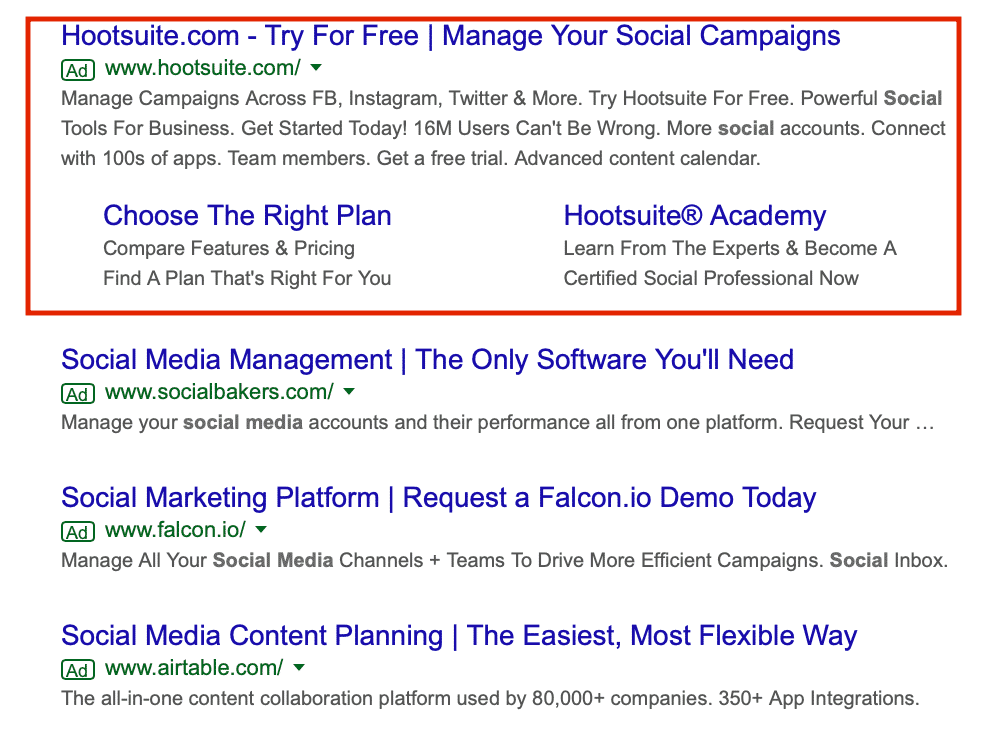
- Stress that there’s no risk. If possible, let users do the free trial without entering in their credit card information. This will increase sign-ups significantly, which will give otherwise-hesitant users the chance to get hooked and happily enter in that information later. Mention this on the landing page if you go this route, and you’ll see an increase in conversions quickly. Constant Contact actually literally says “No risk. No credit card required.” immediately under their bright orange “Start Your Free Trial” CTA.
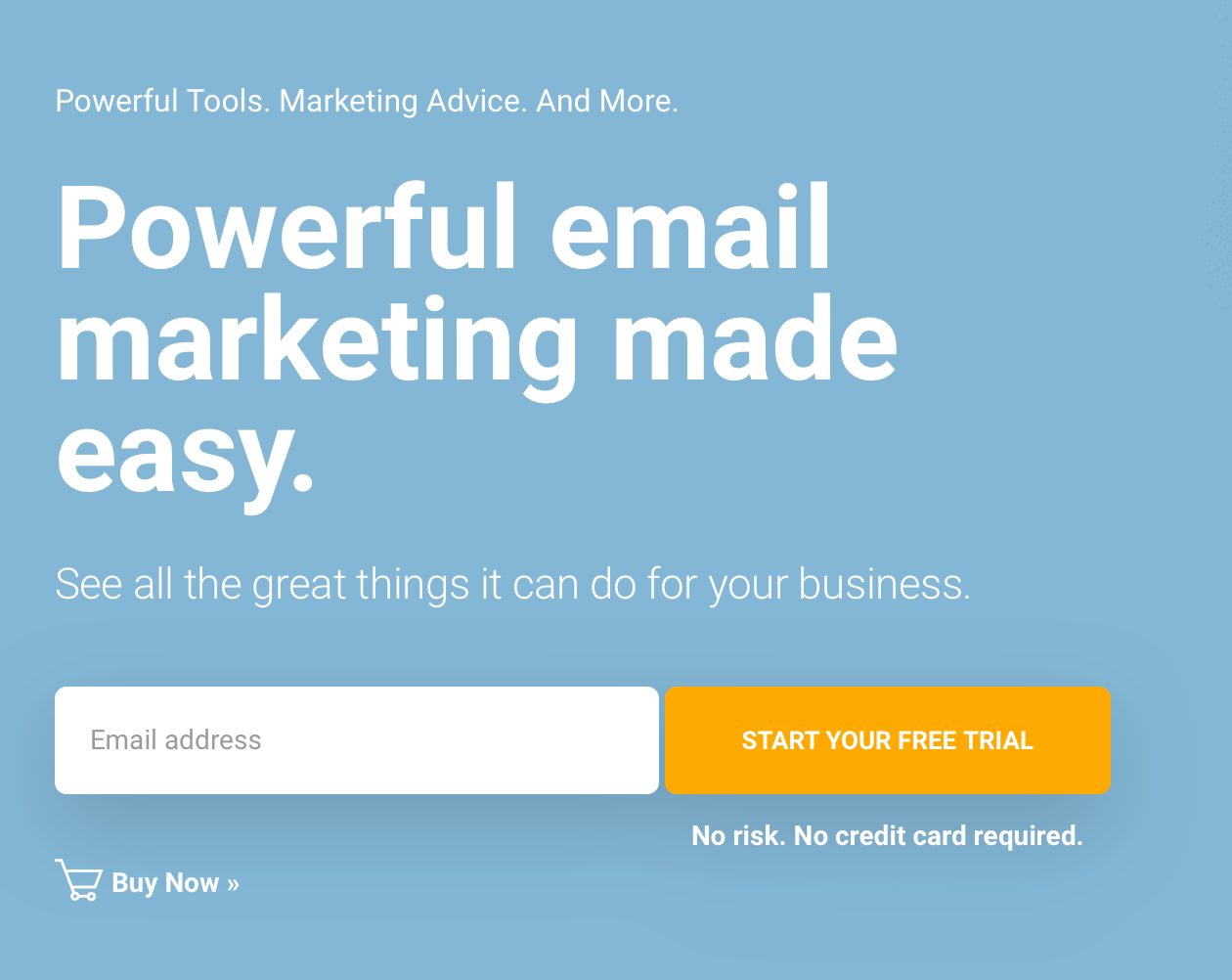
Lead Nurturing vs. Direct Sign-Ups: What’s Right for You?
If you’re furiously debating right now about lead nurturing vs. direct sign-ups and wondering would be better for your business, there’s a chance that both could play an important role in your campaigns. Some SaaS businesses will benefit from having multi-touch funnels, using lead nurturing earlier on in the process and going hard for the direct sign-ups when either retargeting options or more high-intent keywords (including branded or specific keywords) are used.
Other businesses will benefit primarily from lead nurturing or direct sign-up campaigns. There isn’t a right or wrong answer here, as long as it’s working for your business. If you’re unsure, testing is always a good option. Using tools like Unbounce to A/B test two different landing pages (one focusing on lead gen and another on sign-ups) can be an effective way to find out for sure. Make sure you’re measuring the results here while looking at which campaigns seemed to offer improved performances on which landing pages—this can vary and offer valuable insight.
Looking for extra help deciding what’s right for you or executing your SaaS campaigns? We’ve got you covered. Shoot us a message here so we can talk about how we can help you.
What do you think? In the lead nurturing vs. direct sign-ups debate, which one takes the cake for you? Which benefits your business most and drives results? Share your thoughts and questions in the comments below!




